Search
Search Results
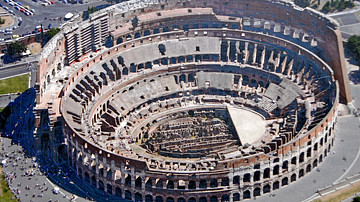
Definition
Colosseum
The Colosseum or Flavian Amphitheatre is a large ellipsoid arena built in the first century CE by the Flavian Roman emperors of Vespasian (69-79 CE), Titus (79-81 CE) and Domitian (81-96 CE). The massive arena held 50,000 spectators and hosted...

3D Image
Colosseum
3D view of the interior of the Colosseum in Rome, as a tourist can visit it today.
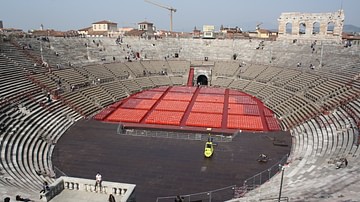
Definition
Amphitheatre
An amphitheatre was a structure built throughout the Roman empire where ordinary people could watch such spectacles as gladiator games, mock naval battles, wild animal hunts, and public executions. Usually oval in form, the largest examples...

Video
Colosseum Valley - Ancient Rome Live (AIRC)
The Colosseum (the Flavian amphitheater) is the largest amphitheater the Romans ever constructed, with a circumference of 545 m, height of 50 m, 189m long and 156m wide. The exterior wall of travertine stone has been estimated to 100,000...

Video
Colosseum - Ancient Rome Live (AIRC)
The Colosseum (the Flavian amphitheater) is the largest amphitheater the Romans ever constructed, with a circumference of 545 m, height of 50 m, 189m long and 156 wide. The exterior wall of travertine stone has been estimated to 100,000 tons...

Video
Colosseum from the Top Wall - Ancient Rome Live (AIRC)
The Colosseum (the Flavian amphitheater) is the largest amphitheater the Romans ever constructed, with a circumference of 545 m, height of 50 m, 189m long and 156 wide. The exterior wall of travertine stone has been estimated to 100,000 tons...
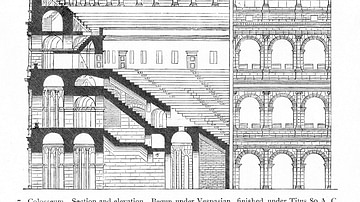
Image
Colosseum Cross-Section
A cross-section of the Colosseum or Flavian Amphitheatre in Rome (begun in 72 CE). The diagram illustrates the four floors with wide access stairways and the outer decoration of (starting from the bottom) Doric, Ionic and Corinthian columns...
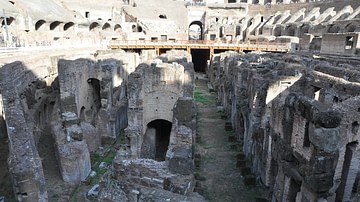
Image
Colosseum Floor (Hypogea)
View of the underground rooms of the Colosseum. The Flavian amphitheater, built between 72 and 80 AD, has two floors built below the cavea, using what was perhaps the pond of Nero.
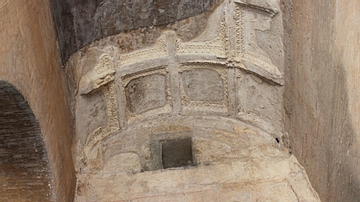
Image
Colosseum, Stucco Decoration.
Colosseum, Rome. Remains of once vividly painted stucco on the vault of one of the main entrances. 72-80 CE.
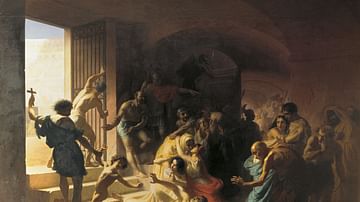
Image
Christian Martyrs in Colosseum
Christian Martyrs in Colosseum, painting by Konstantin Flavitsky, 1862 CE.
State Russian Museum, St. Petersburg